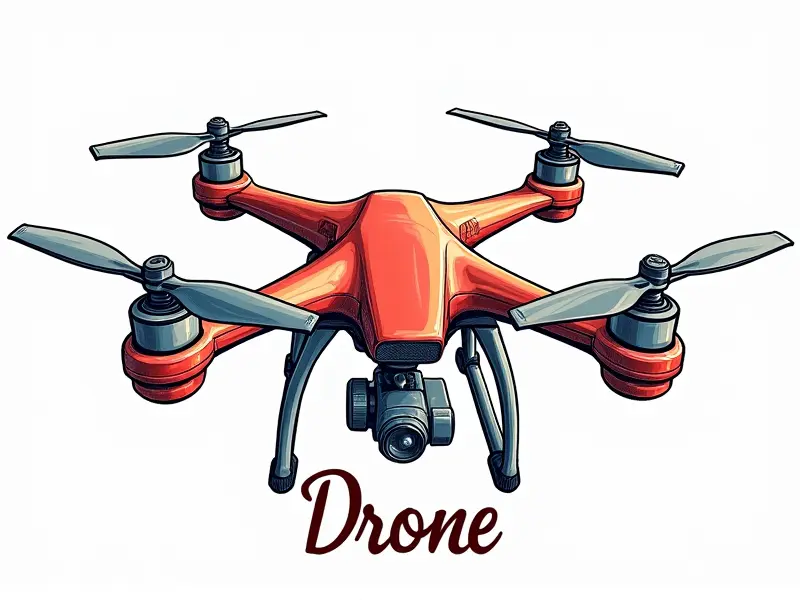Battery not holding charge

Battery Not Holding Charge: Troubleshooting and Maintenance Tips
Are you experiencing issues with your drone battery not holding charge? This common problem can be frustrating, especially when it disrupts your flying sessions. In this article, we'll explore the reasons behind weak battery performance and provide practical tips to extend your drone's battery lifespan.
Why Is My Drone Battery Not Charging?
The first step in troubleshooting a non-charging drone battery is understanding why it might not be accepting a charge. Several factors can contribute to this issue:
- Battery Failure: Over time, lithium polymer (LiPo) batteries degrade and lose their ability to hold a full charge.
- Charger Malfunction: Faulty chargers or incorrect charging protocols can prevent the battery from being fully charged.
- Battery Damage: Physical damage, such as punctures or cracks, can impair the battery's ability to hold a charge.
Common Reasons for Weak Drone Battery Life
A weak drone battery is one that doesn't last long during flight. There are several reasons why this might occur:
- Battery Age and Usage: Over time, the performance of a LiPo battery diminishes due to repeated charging cycles.
- Improper Storage: Storing batteries in extreme temperatures can shorten their lifespan.
- Overcharging or Undercharging: Both practices can damage your drone's battery and reduce its overall capacity.
Tips to Extend Your Drone's Battery Lifespan
Maintaining a healthy battery is crucial for maximizing flight time. Here are some tips to keep your drone’s battery in top condition:
- Monitor Temperature: Store and charge batteries at room temperature (around 68°F or 20°C).
- Avoid Overcharging: Use a smart charger that stops charging once the battery reaches full capacity.
- Proper Storage: Keep batteries in a cool, dry place away from direct sunlight and heat sources.
Maximizing Flight Time with Healthy Drone Batteries
To get the most out of your drone's battery, follow these guidelines:
- Battery Capacity Check: Regularly test your batteries to ensure they are holding a full charge.
- Optimize Battery Settings: Adjust settings like voltage cut-off points and current limits for optimal performance.
- Use High-Quality Batteries: Invest in reputable brands that offer consistent quality and reliability.
Preventing Rapid Drain of Quadcopter Batteries
Rapid battery drain can be a sign of underlying issues. Here’s how to prevent it:
- Battery Maintenance Routine: Regularly inspect batteries for signs of wear and tear.
- Avoid High-Load Conditions: Reduce the load on your drone during critical phases like takeoff and landing.
- Monitor Battery Voltage: Keep an eye on voltage levels to avoid deep discharges that can damage batteries.
RC Helicopter Battery Maintenance Guide
Maintaining the battery for your RC helicopter is essential for smooth operation. Follow these steps:
- Battery Inspection: Check for physical damage and signs of corrosion.
- Charge Regularly: Charge batteries at least once a month to keep them healthy.
- Use Proper Charging Equipment: Invest in high-quality chargers designed specifically for RC helicopter batteries.
Reconditioning Old Drone Batteries for Extended Use
If your drone battery is showing signs of wear, consider reconditioning it:
- Battery Equalization: Perform a full discharge and charge cycle to balance the cells.
- Cleaning Contacts: Clean battery terminals with alcohol wipes to ensure proper contact.
- Monitor Performance: Keep track of how your reconditioned battery performs over time.
Maximizing Charge Retention in FPV Drones
To maximize charge retention in FPV (First Person View) drones, follow these tips:
- Battery Temperature Control: Use cooling pads or fans to regulate battery temperature during charging.
- Select High-Capacity Batteries: Choose batteries with high capacity ratings for longer flight times.
- Avoid Deep Discharges: Limit the depth of discharge (DoD) to preserve battery health and longevity.
Secrets to Maintaining Quadcopter Battery Health
Maintaining quadcopter batteries involves a combination of proper care and regular maintenance:
- Battery Storage Environment: Store batteries in a cool, dry place with minimal humidity.
- Cycle Management: Avoid deep discharges and overcharging to prevent battery degradation.
- Monitor Battery Health: Use diagnostic tools to track the condition of your batteries regularly.
Troubleshooting Dead Drone Batteries Fast
If you encounter a dead drone battery, here’s how to troubleshoot and potentially revive it:
- Battery Testing: Use a multimeter or dedicated battery tester to check voltage levels.
- Discharge and Recharge: Perform a full discharge followed by a complete recharge cycle.
- Contact Support: If issues persist, reach out to the manufacturer for further assistance.
Preventing Premature Degradation in FPV Racing Batteries
To prevent premature degradation of your FPV racing batteries, follow these preventive measures:
- Battery Handling: Handle batteries with care to avoid physical damage.
- Temperature Control: Monitor and control battery temperature during charging and use.
- Regular Maintenance Checks: Inspect batteries regularly for signs of wear or malfunction.
Conclusion
Maintaining a healthy drone battery is crucial to ensuring optimal performance and longevity. By understanding the common reasons behind weak battery life, implementing proper maintenance practices, and troubleshooting issues effectively, you can extend your drone's operational lifespan significantly. Remember, investing time in battery care will pay off with longer flight times and fewer disruptions during critical flying sessions.

